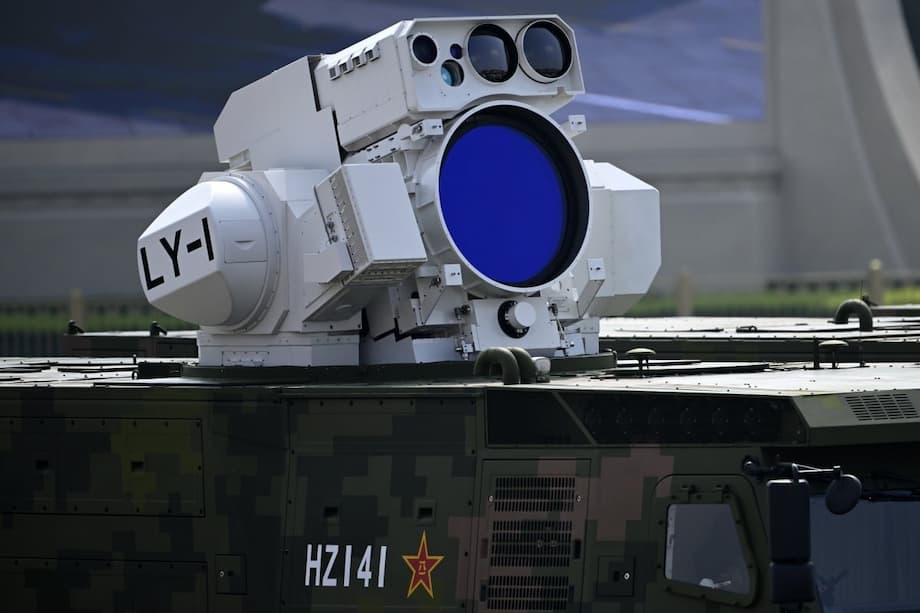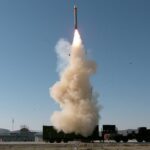Why drone swarms are reshaping naval warfare
Cheap, fast and expendable drones have changed naval risk calculations. In recent conflicts, small uncrewed aircraft have tracked ships, harassed convoys and, in some cases, hit high value assets. The trend is clear. A few thousand dollars can buy a capable quadcopter or fixed wing drone that flies low, hides in sea clutter, and navigates using simple autopilots. A single unit is manageable. Hundreds or thousands that cooperate can overwhelm radars, saturate close in defenses and force ships to spend costly missiles on small, hard to detect targets. That inversion of cost is the heart of the problem: when the attacker spends little and the defender spends a lot, the defense loses staying power.
Drone swarms are not just many drones in the sky. They are teams that coordinate routes, altitudes and timing. They share tasks, adjust to jamming and seek gaps. At sea the challenge is sharper. Distances are long, weather is harsh and a ship’s radar horizon is short against low flyers. Swarms can arrive from multiple approaches, including the surface or from aircraft acting as carriers. Traditional layered air defense, built around a small number of expensive interceptors, was not designed for swarms of small threats. Navies are racing to add new sensors, automation, and lower cost weapons that can scale to the volume of fire a swarm demands.
China’s plan for a digital Great Wall at sea
Chinese naval researchers have laid out an architecture to protect warships against massive swarms. The concept, described as a digital Great Wall at sea, pulls together satellites, airborne and ship sensors, electronic attack, and several new classes of weapons, including high power microwaves, lasers and long reach missiles. A team led by Professor Guo Chuanfu at the PLA Navy’s Dalian Naval Academy published the framework in late August in the journal Command Control & Simulation. Their premise is stark: intelligent swarms that cost a few thousand dollars per airframe can use stealth, coordination and sheer numbers to exhaust and then break classic ship defenses.
The proposed answer is a dynamic kill net. Instead of a ship fighting alone with fixed systems, the net uses software defined networking, automation and human machine teaming to reassign sensors and weapons in real time. If a radar is jammed or a node is damaged, other nodes take over. Satellite cues hand off to maritime patrol aircraft, which hand off to ship radars, infrared cameras and passive radio receivers. The goal is continuous custody of the threat from detection to defeat, with the decision cycle compressed by automation so swarms cannot exploit delay.
Cost is central in the design. Firing a million dollar missile at a small plastic drone is bad math. The architecture prioritizes weapons with low cost per shot and deep magazines, such as high energy lasers, high power microwave beams that can hit many small targets at once, and rapid firing guns that use programmable airburst rounds. Missiles remain in the magazine, but their role shifts to destroying launch platforms or carriers before they can release large groups of drones.
How the architecture works from detection to defeat
The Chinese blueprint mirrors how many navies think about counterswarm defense, but it leans harder on networked sensing and non kinetic effects. The structure divides into functions: find, track and classify; disrupt guidance and communications; and kill what survives with scalable, affordable firepower. Each function has multiple tools so the loss of one does not break the chain.
Detection and tracking across domains
Persistent awareness is the starting point. Overhead satellites cue patrol aircraft to scan broad areas. Shipborne radars, including short wavelength sets that can see small cross sections, search low above the waves. Infrared sensors look for heat from motors and batteries. Passive radio frequency receivers hunt control links. Acoustic sensors on the sea surface can catch the buzz of propellers near the ship. Data from these sources is fused by artificial intelligence so operators get a single track picture without bouncing between displays. The system aims to hold custody on fast, low signature objects that try to mask in sea clutter and maneuver unpredictably.
Classification matters as much as detection. A small quadcopter riding a merchant ship’s wake looks a lot like wave clutter on radar. The net uses multi sensor correlation to cut false alarms and to sort friend, neutral and unknown. It also attempts early identification of role within a swarm. Some drones may carry warheads, others act as jammers or decoys, and a few may scout for missile seekers. Early, accurate sorting allows the defender to match the right effect to each track and avoid wasting high end shots on low end threats.
Soft kill, jamming, deception and microwave energy
Breaking the brain of a swarm is often cheaper than shooting down every drone. Electronic attack units jam common control links, GPS and other satellite navigation signals. Deception systems feed false coordinates or phantom targets, coaxing a group to turn away or waste time. High power microwave weapons add another tool. They radiate bursts that disrupt or burn electronics in many drones at once within a sector. Used well, microwaves can clear a volume of air without expending physical rounds, and they can be retargeted quickly as the group maneuvers.
Soft kill is not free of tradeoffs. Microwave shots and aggressive jamming pull large amounts of power and produce heat that ship systems must manage. They can also affect friendly electronics if coordination and shielding are weak. Commanders need clear rules for when to go kinetic, since soft kill may not stop all drones and damage assessment can be hard in the middle of an attack. The Chinese proposal places these tools up front in the engagement sequence to burn down the swarm’s mass before hard kill systems finish the job.
Hard kill, lasers, guns and missiles
Directed energy is the first layer of hard kill. The LY 1 laser unveiled by China is designed to burn optics and airframes at short ranges with a cost per shot measured in electricity, not in expensive interceptors. Lasers work best in clear air and line of sight. Their effectiveness drops with rain, fog, smoke or dust. They also must dwell on target long enough to cause damage, which means precise tracking on maneuvering drones. Even with those limits, adding ship lasers can absorb many short range engagements that would otherwise consume missiles.
Guns are the workhorses for close range. China’s arms industry has showcased a counterswarm concept known as Bullet Curtain that uses 35 mm airburst rounds to seed a lethal cloud in the path of incoming objects. Rather than a single projectile, each round releases many sub projectiles timed to burst near the target volume. Fire control links radar and optical tracking to adaptive patterns and rates of fire. A related multi barrel concept, based on electronically fired, preloaded munitions sometimes called Metal Storm, aims to achieve extreme rates of fire and rapid reload by swapping prepacked barrels. These approaches seek affordable lethality against dense groups in the final seconds before impact, though commanders must weigh collateral risk if used near crowded sea lanes or ports.
Missiles still matter, but their best role in counterswarm defense is to reach back toward the source. The Chinese framework pairs the close layers with long reach shots against drone carriers such as large aircraft or ships before they can release their loads. Reports of a CJ 1000 hypersonic cruise missile point to this logic. A fast, long range interceptor helps thin the threat at its origin, conserving short range magazines for leakers that get through.
From parade to prototypes
China’s September 3 military parade offered a public snapshot of several pieces that match the counterswarm playbook. Footage and displays highlighted high power microwave systems, the LY 1 laser mounted on vehicles and ships, and long range missiles pitched as counters to airborne launch platforms. In parallel, state defense firms have promoted close in solutions that rely on dense fire rather than guided intercepts. Bullet Curtain, with its programmable 35 mm rounds and integrated radar optics, is presented as a cost effective way to clear airspace of small drones and even some cruise missiles. Developers say containerized magazines and modular mounts would allow rapid reload and installation on ships, vehicles and fixed sites.
China has also showcased a large drone carrier aircraft known as Jiu Tian. The idea is to fly high, release many small drones that spread out and dive on targets, then use autonomy to coordinate their attack. Such a mothership is a double edged concept. It could enable mass launch and long reach for small drones, yet it is a large target in contested airspace and depends on reliable autonomy and communications to keep the swarm coherent at Pacific ranges. Even if early versions are not survivable, the platform can serve as a test bed for algorithms and deployment methods that later migrate to more survivable hosts.
What this means in the Taiwan Strait
Chinese military writings in recent years describe swarms as tools for sea control and sea denial, especially during a blockade or amphibious assault. They also call for robust counters to enemy swarms. The functions repeat across papers: detection, soft kill, hard destruction and camouflage. In practice that means dispersing sensors to hold persistent tracks, using electronic attack and micowaves to tear apart the group, then finishing with guns, lasers and short range missiles while concealing one’s own ships behind decoys, emissions control and signature management.
Analysts warn that the rising use of autonomy and machine learning in these networks can compress reaction time far below traditional decision cycles. Defensive moves such as launching large numbers of intercept drones or turning on powerful jammers may look offensive to the other side. Dual use platforms blur intent. A civilian looking drone boat can be a sensor one day and a weapon the next. In a crowded strait, misread signals and automated responses reduce room for steady diplomacy. Navies will need reliable communications and clear command rules to keep human judgment in the loop during fast moving events.
The maritime setting also shapes outcomes. Swarms that work well over land face long overwater legs, salt corrosion and tougher weather. They need assured navigation when GPS is jammed and robust links when line of sight is blocked by terrain or a ship hull. Long range anti ship missiles remain decisive in many sea fights, so swarms would likely be paired with missiles to distract, confuse or force a ship to waste defensive salvos. A strong counterswarm posture gives a defender more shots and more time, but it sits inside a larger contest that includes missiles, submarines and aircraft.
How other navies are responding
Rivals are moving in the same direction. The United States has pushed programs to field large numbers of autonomous air and sea systems, while at the same time grappling with the realities of software, safety and integration with legacy fleets. Trials of unmanned surface vessels have shown both promise and the risks of immature autonomy, including collisions and control glitches. The lesson is familiar in military tech: building reliable, networked autonomy at sea is hard, and operationalizing it at scale takes more than prototypes.
On the defensive side, the US Navy is adding short range intercept drones like Coyote and Roadrunner M to carrier groups. These small jet powered interceptors can take off, loiter, and home on incoming drones at a cost far below a standard ship missile. Some variants can return to the ship for refuel and reuse. Paired with compact radars that can see small targets, these interceptors add magazine depth and a flexible tool for short range fights. Navies are also testing high energy lasers to thin out threats within a few kilometers, again aiming for low cost per engagement.
Beyond the United States, a wave of projects points to a global race. Sweden has field tests that let soldiers control dozens of uncrewed aircraft at once. Germany, the United Kingdom and others are building architectures for mixed swarms across land, air and sea. As more actors adopt swarming and counterswarm tools, layered defense becomes the standard: find early, disrupt, then kill economically at the endgame.
Technical and economic challenges
Cost exchange is the driver behind most of these choices. The attacker wants to exhaust a defender’s magazine. The defender wants each engagement to be cheap and repeatable. Lasers and microwaves promise deep magazines, but they rely on large electric power and thermal management that must coexist with a ship’s other loads. Guns with programmable rounds are cheaper than missiles, yet they still consume ammunition that must be stored, shipped and reloaded at sea.
Networking many sensors and shooters offers speed and redundancy, yet invites cyber and electronic attack. Software defined networks can reroute data, but they add complexity and demand training. AI fusion can reduce operator load, yet it needs quality data and careful validation to avoid false tracks or friendly fire. A counterswarm that helps one ship means little if it cannot share and coordinate across a task group under jamming and in heavy sea states.
Collateral risk and legal compliance also loom large. Barrage fire that fills a volume with metal is effective, but near a busy strait it can endanger neutral traffic. Microwaves must be managed to avoid harming friendly systems or people on deck. Lasers need strict target control to prevent unintended eye damage or reflections. Clear doctrine, rigorous testing and realistic exercises will separate marketing claims from what fleets can actually use in a crisis.
What to watch next
Several signposts will show how quickly this vision turns into fleet practice. Watch for sea trials that integrate lasers, microwaves and rapid fire guns with ship combat systems, not just stand alone demos. Look for exercises that stress the network, including operations when a node is lost or jammed. Trials that pair counterswarm defenses with long reach missiles against aerial launch platforms will indicate how much priority China gives to killing the archer rather than the arrows. Exports of counterswarm kits to partners would also signal confidence in maturity. Finally, any practical limits, such as power shortfalls for directed energy or slow reload rates for high volume guns, will shape how these systems are deployed and in what numbers.
Key Points
- Chinese naval researchers propose a multilayer counterswarm architecture that ties satellites, aircraft and ships into a dynamic kill net.
- The plan emphasizes low cost, deep magazine options such as lasers, high power microwaves and rapid firing guns, while reserving missiles for striking launch platforms.
- A study led by Professor Guo Chuanfu outlines how swarms of low cost drones could overwhelm legacy ship defenses through coordination and volume.
- Parade displays and industry showcases in 2025 featured LY 1 ship lasers, microwave systems and close range counters like Bullet Curtain that use 35 mm airburst rounds.
- The architecture follows four functions seen in Chinese writings: detection, soft kill, hard destruction and camouflage.
- China’s large drone mothership concept, Jiu Tian, points to mass launch of small drones but faces survivability and autonomy hurdles in contested airspace.
- Other navies are fielding layered counters, including short range intercept drones and shipboard lasers, while coping with autonomy and integration challenges.
- Soft kill methods promise scale but require significant electric power and careful coordination to avoid fratricide and collateral effects.
- Cost exchange remains the core challenge. Defenders seek affordable shots and large magazines to outlast swarm attacks.
- Progress will be visible in integrated sea trials, resilient networking under jamming and realistic exercises that test reload, power and rules of engagement.




